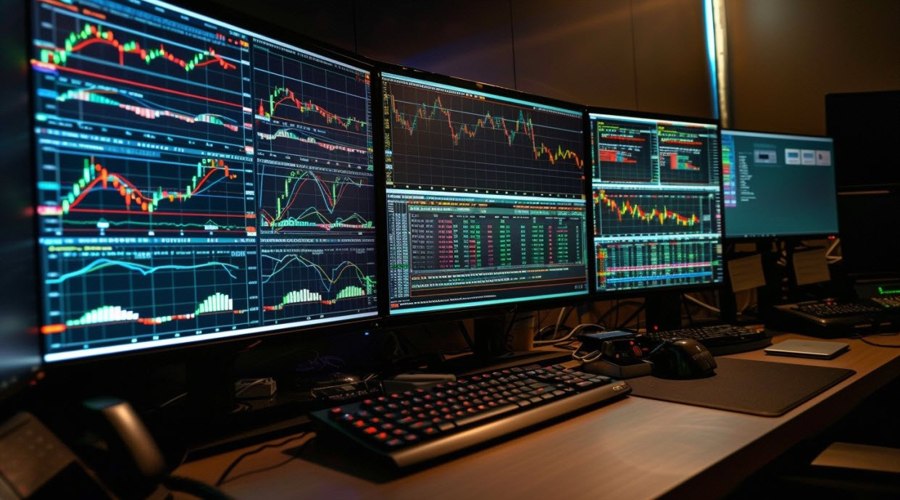If you’ve recently passed your prop firm challenge or you’re gearing up to take one, congrats! That’s a huge step. But before you jump headfirst into the live markets, there’s one thing you absolutely need to have dialed in: your MT5 terminal setup.
Yep, we’re talking about MetaTrader 5—the platform that pretty much every prop firm under the sun uses these days. Now, here’s the deal: most traders underestimate how much of a difference a properly set up MT5 terminal can make. We’re not just talking about making it look pretty. We’re talking functionality, efficiency, speed, and ultimately, performance. If your charts are cluttered, your indicators are lagging, or your hotkeys aren’t mapped out, you’re basically trading with one hand tied behind your back. So let’s fix that.
First Things First: Download the Right MT5 Terminal
Prop firms often provide their own branded version of MT5 and that’s what you’ll want to use. Even though MT5 is MT5 no matter where you get it from, these prop firm versions are usually pre-configured to connect to their proprietary server.
So don’t just Google “MT5 download” and grab the first link. Head over to your prop firm’s dashboard, find the download section, and install the terminal directly from there. You’ll avoid connection issues later and ensure your trades are being routed correctly.
Pro Tip: If you’re working with multiple prop firms, consider installing each firm’s MT5 trading platform terminal in separate folders. That way, you can run them side by side without any conflicts.
Log In and Connect to the Correct Server
Once the terminal is installed, fire it up, and log in using the credentials your prop firm gave you. Usually, they’ll provide you with a login ID, password, and the name of the server (like “PropFirmName-Live” or “PropFirmName-Demo”).
To log in:
- Go to File > Login to Trade Account
- Enter your login info
- Make sure to select the right server
Give it a few seconds to connect. If you see “No Connection” or “Invalid Account,” double-check your credentials or try a different server from the dropdown.
Clean Up the Default Workspace
Alright, now that you’re in, let’s clean up the chaos.
MT5 starts with a few random currency pairs on the chart and a whole bunch of indicators you probably don’t even use. You don’t want to waste time deleting them every time you launch the terminal, so let’s customize your default layout.
Here’s what to do:
- Close all the default charts (right-click on the chart tabs and hit “Close”)
- Set up one clean chart with your preferred pair (e.g., EUR/USD)
- Apply your favorite color scheme, timeframe, and indicators
- Save this as your default template: Right-click the chart > “Template” > “Save Template” > name it Default.tpl
Set Up Your Favorite Pairs in the Market Watch
Market Watch is your control center. This is where you’ll view all available instruments, check spreads, and drag symbols onto your charts.
By default, MT5 only shows a few symbols. You’ll want to add all the instruments your prop firm allows.
- Right-click inside the Market Watch panel
- Select Symbols
- Expand each category (Forex, Commodities, Indices, etc.)
- Double-click to add/remove instruments, or just hit “Show All” to display everything
Once your list is populated, drag your most traded pairs to the top. You can also right-click and select “Hide” to clean up the ones you never touch.
Quick Tip: If you’re a scalper, keep a close eye on the spread column. You can enable it by right-clicking in Market Watch and selecting “Spread.” Wider spreads during news events? You’ll see it in real-time.
Customize Chart Settings (Colors, Candles, Timeframes)
A clean, readable chart is non-negotiable.
Let’s be real—those green bars on a black background MT5 gives you by default? Not it.
Here’s how to set up your chart for maximum readability and focus:
- Right-click on your chart and select “Properties.”
- Under “Colors,” customize things like:
- Background: White or dark gray
- Bull candle: Green or blue
- Bear candle: Red or orange
- Grid: None (Seriously, kill the grid—it’s visual clutter)
Now, go to the “Common” tab:
- Set chart type (candlesticks for most traders)
- Enable or disable chart shift and auto scroll as you prefer
Then save this as a template like we mentioned earlier, so you’re not doing this every time.
Add Only the Indicators You Actually Use
It’s tempting to throw on everything—RSI, MACD, Bollinger Bands, moving averages, trendlines, Fibonacci grids but let’s be honest, more isn’t always better.
Stick with what works for your strategy. If you’re a price action trader, maybe you don’t need any indicators at all. If you use a moving average crossover system, then just add your MAs.
To add indicators:
- Go to Insert > Indicators
- Or drag and drop them from the “Navigator” panel
After you add them, right-click > “Indicator List” which lets you tweak or remove them later.





